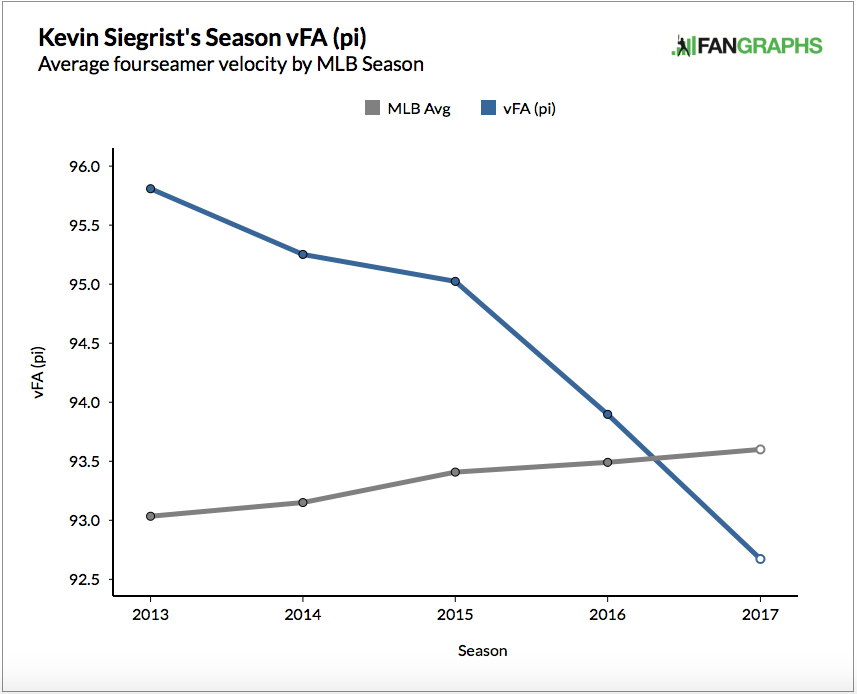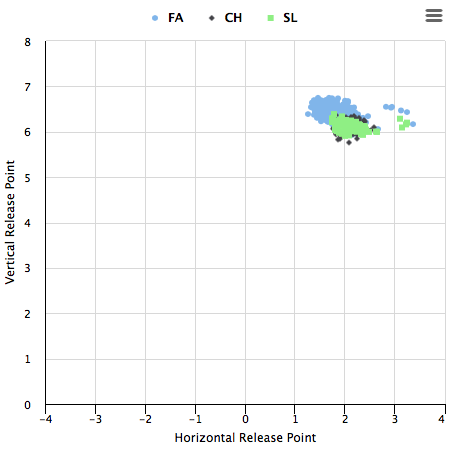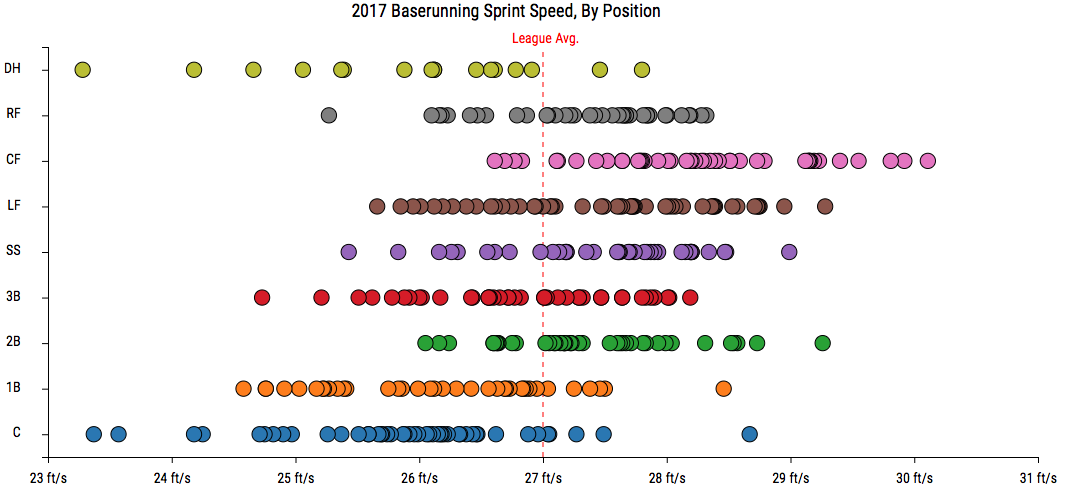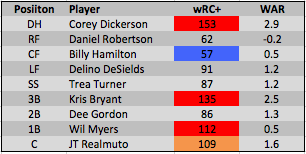Challenging Conventional Wisdom About the Trade Deadline
The MLB trade deadline has passed, and you may be happy or disappointed that your favorite team is going to be stuck with the players they now have until the end of season. Actually, that’s not true. Trades can be made until August 31, but any player swap after the deadline invokes the waiver-wire process, which allows any other team to block a trade or claim a waiver player for themselves. So, deals that will have any sort of impact will usually happen just before the deadline.
This year’s trade deadline involved the names of mostly pitchers — Sonny Gray, Yu Darvish, Jaime Garcia, David Robertson, Sean Doolittle, Addison Reed, Francisco Liriano, and others were all traded near or almost at the deadline.
The Dodgers, whose pitching staff so far has led the league in FIP, ERA, WHIP, and rank third in K/BB ratio, added Yu Darvish, a pitcher who hasn’t been his best this season, but who can certainly turn a great rotation into a nearly unbeatable one in a five-game or seven-game series. The Cubs, whose bullpen ranks 10th in fWAR, brought in left-handed reliever Justin Wilson from the Tigers, who presumably will fill the role as the set-up man for Wade Davis. The Yankees supplemented a bullpen that ranks fourth in ERA and WHIP, and second in K/9, with Sonny Gray and David Robertson. Sean Doolittle and Brandon Kintzler were sent to the Nationals to help solve their bullpen issues which have resulted in the second-worst ERA in the league. On the same day that Lance McCullers was placed on the 10-day DL, the Astros traded for Francisco Liriano to add some stability to their rotation/bullpen as they are all but guaranteed a postseason spot.
But every year, we hear talk about which teams will buy or sell. The teams who have little to no shot of making the postseason, are obviously more likely to sell. The decision-making gets interesting when looking at teams that are “on the bubble.” Front offices must decide whether to go all-in for the current year, possibly giving up young prospects for proven stars to fill needs they see in their team, or to take the seemingly less-risky route of keeping your prospects and attempting to fill your needs with lesser players on the trade market and hope that it’s enough to make a run in the postseason. And if it doesn’t work out, at least you didn’t give up your future stars.
This is the conventional wisdom that’s being challenged by some teams, and needs to be examined more. The truth about the postseason in professional baseball is that you don’t know when you’ll have that chance again, no matter how many top-100 prospects you have. The Washington Nationals infamously shut down Stephen Strasburg in 2012 following the logic that it would be better to save their starter for future postseasons rather than “risk it” that year. And of course, the Nationals have not won a postseason series since. Had they managed Strasburg so that he could have pitched into October, who knows what would have happened. Win probabilities show that is far easier to predict who will make the playoffs then what will happen once those teams get there. So if you have a chance to make the playoffs, you should go all-in for it.
This is exemplified by the win probabilities calculated at FiveThirtyEight.com. As of this article’s writing, the Dodgers have a greater-than 99% chance of winning their division, and a 23% chance of winning the World Series, and the same can be said about the Astros. The Nationals, Indians, and Cubs all have a ten, nine and eight percent chance of winning the Fall Classic, respectively. But all three of those teams have an 84% chance or better of making the playoffs. The point is, you could be the Dodgers or the Astros and be having a historic season, and still “only” have a 23% of winning the World Series. Now, this year is unusual. Typically, even when baseball teams are really good, their World Series chances are less than 20%. Comparing this to basketball, the Warriors, dominating the NBA in a similar fashion that the Dodgers and Astros are in the MLB, had a 48% chance of winning the title at a similar point in their season. So even when there seems to be a lack of parity in the game, baseball’s postseason still has a relatively higher level of unpredictability. These win probabilities are the data that should be driving the decisions of teams as they near the deadline, particularly if they have even a small chance of getting to the playoffs. Because you can never have enough talent to guarantee a chance to win the pennant or the World Series.
Obviously, these decisions are limited by payroll and the contracts of the players you have at the time. But the overall idea that a team who has a small chance should wait and build even more so that they have an even better chance of making the playoffs the next year or some other year down the road — it needs to go. The Dodgers were smart to add a great starting pitcher in Yu Darvish despite already having arguably the best staff in baseball. And the Yankees and Cubs were smart to bolster their previously strong bullpens. What is interesting is that, once again, the Nationals, who have one of the worst bullpens in the league, did not push harder for Sonny Gray or Justin Wilson. They got Sean Doolittle, who is good (4.10 ERA and 0.3 WAR in 2017 according to bbref.com) and Brandon Kintzler, who has been slightly better (2.78 ERA and 1.2 WAR in 2017). It’s also interesting to see that the Red Sox, whose offense ranks 23rd in wRC+, did not go after more hitters close to the deadline, and settled for reliever Addison Reed from the Mets. The Red Sox currently have a 6% chance of winning the World Series according to FiveThirtyEight. If their offense doesn’t pick up, their reluctance to find that power bat could be the difference.
But the Rockies, who currently have a 2% chance of winning it all and whose relievers’ ERA ranks 23rd at 4.52, acquired Pat Neshek and his 2.1 WAR from the Phillies. The Diamondbacks added J.D. Martinez to a powerful lineup that likely has more in them than they’ve showed recently, seeing that they are fifth in hard-contact percentage, but 16th in wRC+. Both of these are smart moves by the front office; on the other hand, Mike Rizzo of the Nationals and Dave Dombrowski of the Red Sox will have some questions to answer if their teams don’t make decent runs into the postseason.
Hopefully, we continue to see more teams who have at least a 2 or 3% chance of winning the World Series go all-in at the trade deadline. I’m not claiming that the reasons other teams weren’t more aggressive at the trade deadline are because they’re concerned about losing prospects, but it is worth noting that teams often make the mistake of not going all-in because they don’t believe they have a high enough chance of winning it all, when the reality is that you don’t. You just need a somewhat reasonable path to the playoffs, where the x-factor of unpredictability comes into play and anything can happen.


























